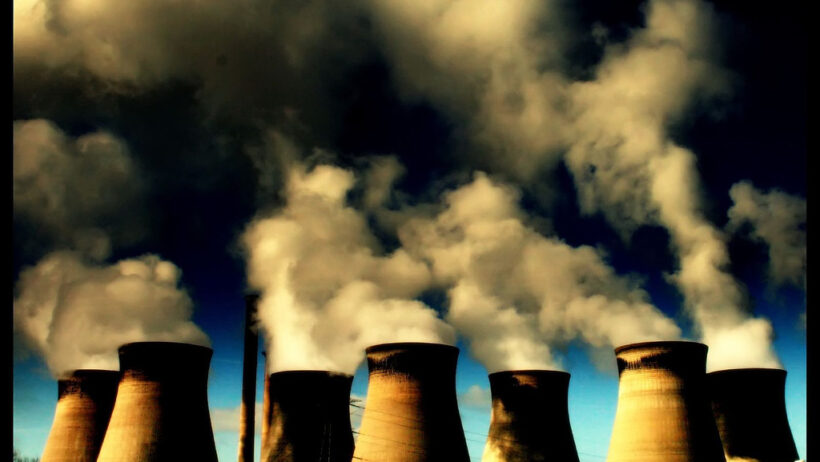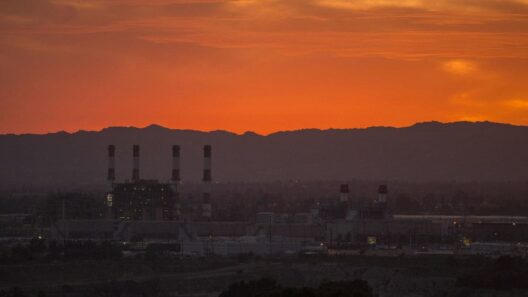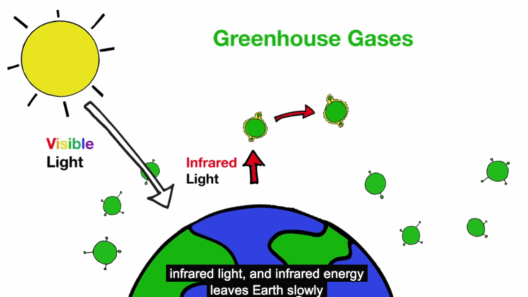In contemporary discourse regarding environmental degradation, two phenomena often emerge: thermal pollution and global warming. While both contribute to our environmental challenges, they are distinct in nature, underlying causes, and implications. To comprehend their differences, one must delve into definitions, mechanisms, consequences, and broader ecological implications.
Definitions and Mechanisms
Thermal pollution refers specifically to the detrimental alteration of water temperature caused by human activities, predominantly industrial discharge and urban runoff. When industries, such as power plants, utilize water for cooling processes, the resultant effluents often increase the temperature of nearby water bodies. This influx of warmth disrupts aquatic ecosystems. In contrast, global warming embodies a more expansive concept involving the gradual, anthropogenic rise in Earth’s average temperature due to elevated greenhouse gas concentrations in the atmosphere, primarily carbon dioxide and methane, resulting from the burning of fossil fuels, deforestation, and agricultural practices.
The mechanisms at play in thermal pollution primarily revolve around heat exchanges in water systems. Thermal effluents can raise local temperatures by a few degrees, significantly impacting fish and other aquatic organisms that depend on specific temperature ranges for survival. Species unable to adapt to increased temperatures may experience stress, reproductive challenges, and even mortality. Conversely, global warming involves a complex interplay of atmospheric physics, greenhouse gas emissions, and solar radiation retention. The ramifications are far-reaching, influencing climatic patterns, sea levels, and biodiversity across the globe.
Consequences on Ecosystems
The ramifications of thermal pollution on local ecosystems are alarming, often manifesting in phenomena like algal blooms. Warmer water temperatures can exacerbate the growth of harmful algal blooms, resulting in hypoxic—or low oxygen—conditions that devastate aquatic life and obliterate fisheries integral to human livelihoods. Additionally, the alterations in species distribution due to thermal stress can lead to a loss of biodiversity, as native species struggle to compete with warmer water-adapted invasive species.
In stark contrast, global warming contributes to large-scale ecological shifts. The implications of rising temperatures extend beyond regional boundaries, inducing migratory changes in wildlife, altering phenological events such as flowering and breeding, and intensifying extreme weather patterns. These alterations can lead to habitat loss, reduced agricultural yields, and increased human-wildlife conflicts. Global warming’s effects are global, interlinked, and often irreversible, posing existential threats to both human societies and natural ecosystems alike.
Social and Economic Implications
Thermal pollution engenders localized concerns, often necessitating regulatory measures to mitigate its impact on water bodies. The economic ramifications can be significant, as fisheries suffer losses due to disrupted ecosystems, affecting economies dependent on those resources. Additionally, increased temperatures in aquatic environments can undermine the availability of clean water for domestic, agricultural, and industrial uses, necessitating costly investments in remediation technologies.
Global warming prompts a broader economic examination, leading to systemic change. Plummeting agricultural productivity, amplified natural disasters, shifting disease patterns, and increased resource scarcity are a few consequences that demonstrate the delicate balance of socio-economic systems and their reliance on environmental stability. The economic burden of climate change is compounded by its global nature; unlike thermal pollution, solutions must be coordinated internationally. The urgency of collective action underscores the interdependence of nations, requiring collaboration in technology transfer, equitable resource management, and climate adaptation strategies.
Mitigation Efforts
Combating global warming demands more comprehensive stratagems involving significant reduction in greenhouse gas emissions. Transitioning to renewable energy sources, bolstering energy efficiency, and adopting sustainable agricultural practices are paramount. The consequences of climate change necessitate a sustained focus on adaptation strategies, renewable technology adoption, and the pursuit of innovative solutions to curtail emissions and mitigate impacts.
Public Perception and Awareness
Given the complexity of these environmental challenges, public perception often veers towards the more prominent discourse surrounding global warming, largely driven by its catastrophic implications and widespread media coverage. Thermal pollution, although equally pernicious, persists in the peripheries of environmental consciousness. Raising awareness of thermal pollution’s significance plays a vital role in addressing issues at the grassroots level, encouraging more sustainable practices and improving water quality management in communities.
The fascination surrounding climate issues, particularly the interplay between thermal pollution and global warming, stems from a shared environmental ethos. The acknowledgment of their differences and nuances allows for a more comprehensive understanding of the intricacies of ecological health and climatic changes affecting our world. As environmental stewards, recognizing and addressing both thermal pollution and global warming enables a multifaceted approach towards sustainability, fostering not only ecological but also social and economic resilience.
In conclusion, understanding the nuances between thermal pollution and global warming illustrates the complexity of environmental issues faced today. While integral to the greater narrative of climate change, each presents unique challenges and solutions that necessitate informed action and public engagement. Embracing the urgency of these issues cultivates a pathway toward ecological balance and enduring resilience in the face of an uncertain future.






